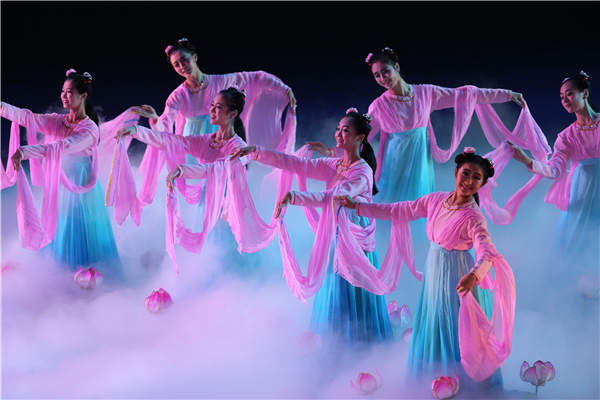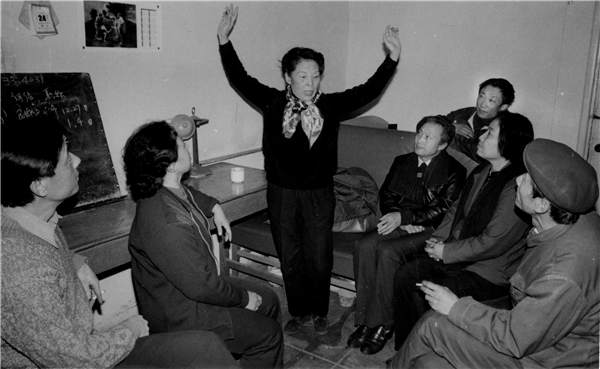

Beijing Dance Academy will launch a yearlong project, Dance For People, in 2021, which will see 100 dance productions presented online.
Selected from performances created by dancers and choreographers from the academy since its formation in 1954, the 100 shows represent the artistic achievements from different generations of the institution's artists.
"The selected pieces showcase the development of the country's dance scene. Many were inspired by the country's history and traditional culture. We planned to unveil the project in 2021, hoping to mark the 100th anniversary of the founding of the Communist Party of China this year," says Xu Rui, vice-president of Beijing Dance Academy.
The first two dance pieces to be screened online will be Lotus Dance choreographed by Dai Ailian, or Ailien Tai (1916-2006), and Erdos choreographed by Jia Zuoguang (1923-2017).
Dai, who was born to a Chinese family from Trinidad, in the Caribbean, learned ballet in London. She returned to China in 1940.
Half a century ago, the Beijing Dance School was the predecessor of the Beijing Dance Academy, which first opened on Sept 6, 1954.It was the country's first institute of dance. Dai, then 38, an overseas Chinese ballerina, was appointed the first president of the institute. She is credited for performing classical Western repertories as well as works inspired by Chinese folk culture.
According to Gao Du, director of the academic committee of Beijing Dance Academy, Lotus Dance, was born as an adaptation of a traditional dance that was popular in Northwest China's Gansu province and Shaanxi province.
With the dance piece, she showed the purity of the lotus, symbolizing the birth of the founding of New China in 1949.
The dance piece was staged at the International Youth Festival in Romania, and Dai won the second prize for her choreography.

Erdos was choreographed by Jia Zuoguang, co-founder of Beijing Dance Academy. In 1955, Jia traveled to Erdos, Inner Mongolia autonomous region, to collect folk dance and music materials. He spent months living with local herders and observed their daily lives.
In the resultant dance production, Jia portrays the farming and working lives of the herders, as well as their horse-riding movements. He also combines them with the religious dances that he learned from the monks at local temples in Erdos.
The dance piece premiered in 1955 and won a first prize for choreography during the Fifth World Festival of Youth and Students held in Warsaw, Poland.
"The roots of their works were in Chinese culture and they are rich with emotions," says Gao, adding that today the statues of Dai and Jia are displayed at the Beijing Dance Academy to honor their contribution to the development of the country's dance scene.
"Dance is a universal art and great choreographers make it as close to life as possible. My teachers taught me those classic works when I was a young dancer. Now, I am teaching my students the same moves. That's how we keep the tradition alive," adds Gao.
Besides screening the classic dance pieces, online workshops and forums will be held throughout the year.